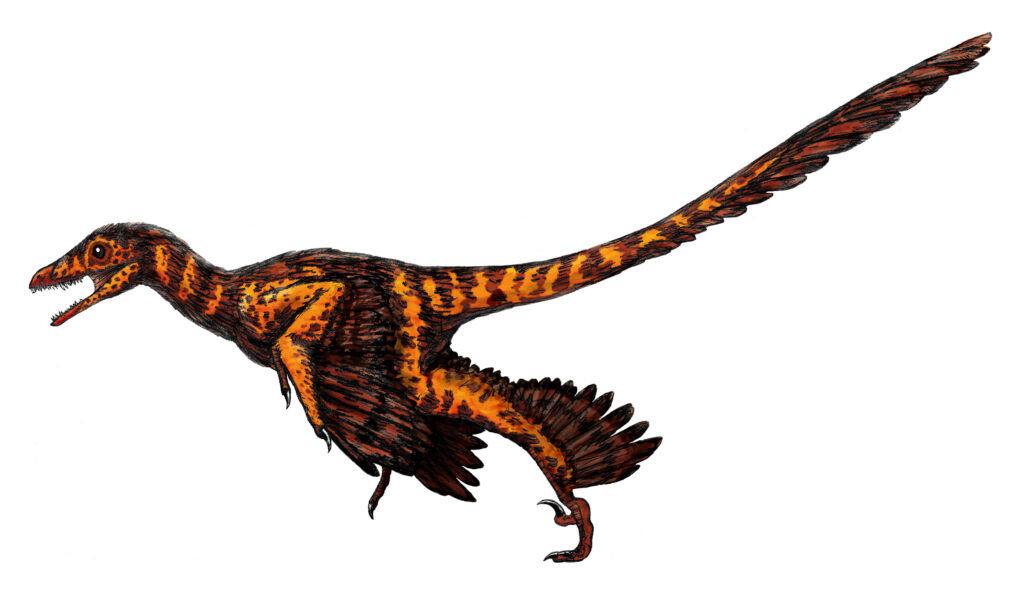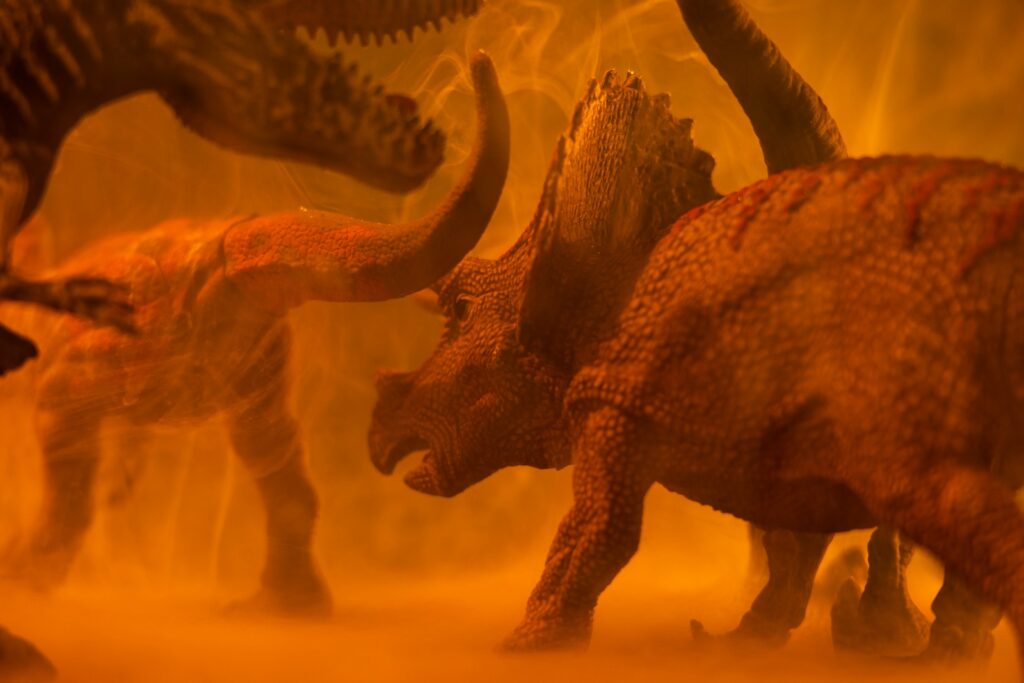When we imagine dinosaurs, we typically think of their enormous size, fearsome teeth, or protective armor. Yet one intriguing question that paleontologists have begun exploring is whether some dinosaurs might have possessed venomous or poisonous capabilities. While direct evidence remains limited, recent scientific research has opened fascinating possibilities about toxic dinosaurs that could change our understanding of these prehistoric creatures. Examining everything from peculiar jaw structures to evolutionary relationships with modern venomous animals, scientists are piecing together a more complex picture of dinosaur defense and predation strategies that might have included toxicity.
Distinguishing Between Venomous and Poisonous

Before diving into dinosaur toxicity, it’s important to clarify the distinction between “venomous” and “poisonous” animals. Venomous creatures actively deliver toxins through specialized structures like fangs or stingers, injecting venom directly into other organisms. Examples include snakes, scorpions, and some species of fish. Poisonous animals, by contrast, contain toxins in their tissues that cause harm when the animal is touched or ingested. Poison dart frogs and certain pufferfish demonstrate this passive defense strategy. This distinction matters when considering potential toxic dinosaurs, as the anatomy needed for venom delivery would leave different fossil evidence than poisonous tissue, which rarely fossilizes at all.
The Sinornithosaurus Controversy

One of the most discussed candidates for a potentially venomous dinosaur is Sinornithosaurus, a feathered dromaeosaurid that lived in China during the Early Cretaceous period. In 2009, paleontologists proposed that this raptor possessed specialized grooved teeth and potential venom glands similar to those seen in modern venomous snakes. They suggested that Sinornithosaurus might have used a venomous bite to subdue prey, particularly birds. However, this hypothesis faced significant criticism from other researchers who argued that the supposed venom delivery structures were the result of preservation artifacts or misinterpreted anatomy. The debate continues, highlighting the challenges in definitively identifying venomous capabilities in extinct animals known only from fossil remains.
Evolutionary Precedent: Venomous Modern Relatives

While direct evidence of venomous dinosaurs remains controversial, the evolutionary relationships between dinosaurs and modern animals provide an intriguing context. Birds are direct descendants of theropod dinosaurs, and several modern bird species possess toxic or venomous properties. The pitohui and ifrita birds of New Guinea carry batrachotoxins in their skin and feathers, making them poisonous to touch or consume. The solenodons, ancient mammals that coexisted with late dinosaurs, have venomous saliva delivered through specialized grooved teeth. Even the Komodo dragon, though not directly related to dinosaurs, demonstrates how large reptiles can evolve toxic capabilities through bacteria-laden saliva. These examples suggest that the basic biological framework for toxicity existed within the dinosaur family tree.
Potential Venom Delivery Systems in Dinosaurs

If some dinosaurs were indeed venomous, their fossil remains might contain clues about their venom delivery systems. Paleontologists look for several anatomical features when investigating this possibility. Grooved or specialized teeth could have channeled venom from glands into prey, similar to the systems seen in venomous snakes and lizards. Unusual jaw structures might have housed specialized venom glands or associated tissues. Some researchers have even suggested that certain dinosaurs might have used their claws or specialized tail structures to deliver toxins. The theropod dinosaur Unenlagia has unusual dental features that some paleontologists have speculated could be related to venom delivery, though this remains highly speculative without further evidence.
Toxic Defenses in Plant-Eating Dinosaurs

While carnivorous dinosaurs might have used venom for hunting, herbivorous dinosaurs potentially employed toxins as defensive mechanisms. Modern plant-eating animals sometimes sequester toxins from the plants they consume and incorporate them into their tissues as protection against predators. The possibility exists that certain herbivorous dinosaurs might have employed similar strategies. Armored dinosaurs like ankylosaurs and stegosaurs already possessed impressive physical defenses, but smaller herbivorous species might have benefited from chemical protection. Some paleontologists have speculated that dinosaurs like Heterodontosaurus, with its odd combination of different tooth types, might have had specialized diets that could have included toxic plants, potentially allowing them to sequester toxins in their tissues as a defensive adaptation.
The Limits of the Fossil Record

One significant challenge in determining whether dinosaurs possessed toxic capabilities stems from the limitations of the fossil record itself. Soft tissues rarely fossilize, and venom glands, poisonous skin, or specialized venom-producing organs would be unlikely to leave direct evidence in fossils. Even in exceptionally preserved specimens, the biochemical signatures of toxins would degrade over millions of years. Paleontologists must, therefore, rely on indirect evidence, such as unusual anatomical structures that might have supported venom delivery systems. Additionally, comparing these structures to modern venomous animals helps establish possible parallels. Despite these challenges, advances in microscopy, biochemical analysis, and comparative anatomy continue to provide new ways to investigate possible toxic dinosaurs.
The Case of Specialized Salivary Functions

Some researchers have proposed that certain dinosaurs might have possessed specialized salivary functions that, while not necessarily producing true venom, could have delivered bacteria or anticoagulant compounds into prey. The Komodo dragon offers a modern analog, as its bite introduces bacteria and compounds that prevent blood clotting, eventually leading to their prey’s death from blood loss or infection. Some theropod dinosaurs had serrated teeth with unusual microscopic structures that could have harbored bacteria, potentially creating infectious bites. Certain dinosaurs might have evolved specialized salivary glands that secreted compounds to aid in subduing prey or digesting food. These adaptations wouldn’t qualify as true venom but would represent specialized toxic strategies that wouldn’t necessarily leave clear fossil evidence.
Venomous Archosaurs: The Broader Context

Dinosaurs belong to the archosaur lineage, which also includes crocodilians, pterosaurs, and their various ancestors and relatives. While no modern crocodilians are venomous, some extinct archosaur relatives demonstrate that venomous capabilities evolved within this broader group. Uatchitodon, a Triassic proto-crocodilian reptile, possessed grooved teeth strongly suggesting venom delivery. Some modern birds, the direct descendants of dinosaurs, produce toxic compounds in their skin and feathers. This broader evolutionary context indicates that the genetic and developmental pathways for producing toxins existed within the archosaur lineage during the age of dinosaurs. The question becomes not whether archosaurs could evolve veno, but which specific dinosaur groups might have developed this capability.
Potential Ecological Advantages of Dinosaur Toxicity

If some dinosaurs did possess toxic capabilities, this would have provided them with significant ecological advantages. For smaller predatory dinosaurs, venom could have allowed them to tackle prey larger than themselves by inducing rapid immobilization or death. Venomous bites would have been particularly advantageous for dinosaurs hunting prey that could escape quickly, such as early mammals or birds. For herbivorous dinosaurs, toxicity could have served as an important defense against predators in environments where physical armor or speed weren’t sufficient protection. Toxicity might also have played a role in intraspecies competition, particularly during mating seasons. These potential advantages help explain why toxicity might have evolved independently in different dinosaur lineages, just as it has in numerous modern animal groups.
Scientific Methods for Investigating Dinosaur Toxicity

Paleontologists employ several sophisticated techniques to investigate the possibility of toxic dinosaurs. Computed tomography (CT) scanning allows researchers to examine the internal structures of fossil jaws and teeth without damaging specimens, potentially revealing channels for venom delivery or spaces for venom glands. Scanning electron microscopy can identify microscopic features on teeth that might have facilitated toxin delivery. Phylogenetic bracketing—studying the traits of a fossil animal’s closest living relatives—helps establish whether toxicity was likely present in extinct species. Biomechanical analysis examines how dinosaur jaws and teeth functioned, potentially revealing adaptations consistent with venom use. These multidisciplinary approaches allow scientists to build stronger cases for or against toxic capabilities in specific dinosaur species.
Toxic Dinosaurs in Popular Culture

The concept of venomous or poisonous dinosaurs has captured the public imagination, appearing in various forms of popular media. Perhaps most famously, the 1993 film Jurassic Park featured the Dilophosaurus as a venom-spitting predator with an expandable neck frill, though these characteristics were entirely fictional and not based on fossil evidence. More recently, the Jurassic Worl franchise introduced the fictional Indoraptor, a genetically engineered dinosaur with venomous capabilities. Numerous children’s books, video games, and television programs have depicted venomous dinosaurs, often with exaggerated or entirely invented toxic abilities. While these portrayals rarely align with scientific evidence, they demonstrate the enduring fascination with the concept of toxic dinosaurs and have sometimes inspired legitimate scientific inquiry into the possibility.
Future Research Directions

The question of toxic dinosaurs remains an active area of paleontological research with several promising future directions. Advanced imaging techniques continue to improve, allowing more detailed examination of fossil specimens for evidence of venom delivery structures. Molecular studies of modern venomous animals are enhancing our understanding of how venom genes evolve, potentially allowing researchers to better predict which dinosaur lineages might have possessed the genetic framework for venom production. New fossil discoveries, particularly those with exceptional preservation from sites in China and Brazil, may provide specimens with preserved soft tissues that could offer more direct evidence of venom glands or poisonous skin structures. Additionally, biomechanical modeling is becoming increasingly sophisticated, allowing more accurate reconstructions of how dinosaur jaws and teeth functioned, potentially revealing adaptations consistent with venom use.
Conclusion: A Fascinating Scientific Question

While definitive evidence for venomous or poisonous dinosaurs remains elusive, the possibility cannot be dismissed and continues to intrigue paleontologists. The evolutionary relationships between dinosaurs and modern toxic animals, combined with the occasional discovery of unusual anatomical features in certain dinosaur species, suggest that toxicity may have evolved in at least some dinosaur lineages. As research methods advance and new fossils are discovered, our understanding of dinosaur biology continues to evolve. Whether future discoveries confirm the existence of toxic dinosaurs or not, investigating this possibility enhances our appreciation for the complex adaptations and ecological relationships that characterized the Mesozoic world. The question of toxic dinosaurs reminds us that despite centuries of study, these fascinating prehistoric creatures still hold many secrets waiting to be uncovered.




